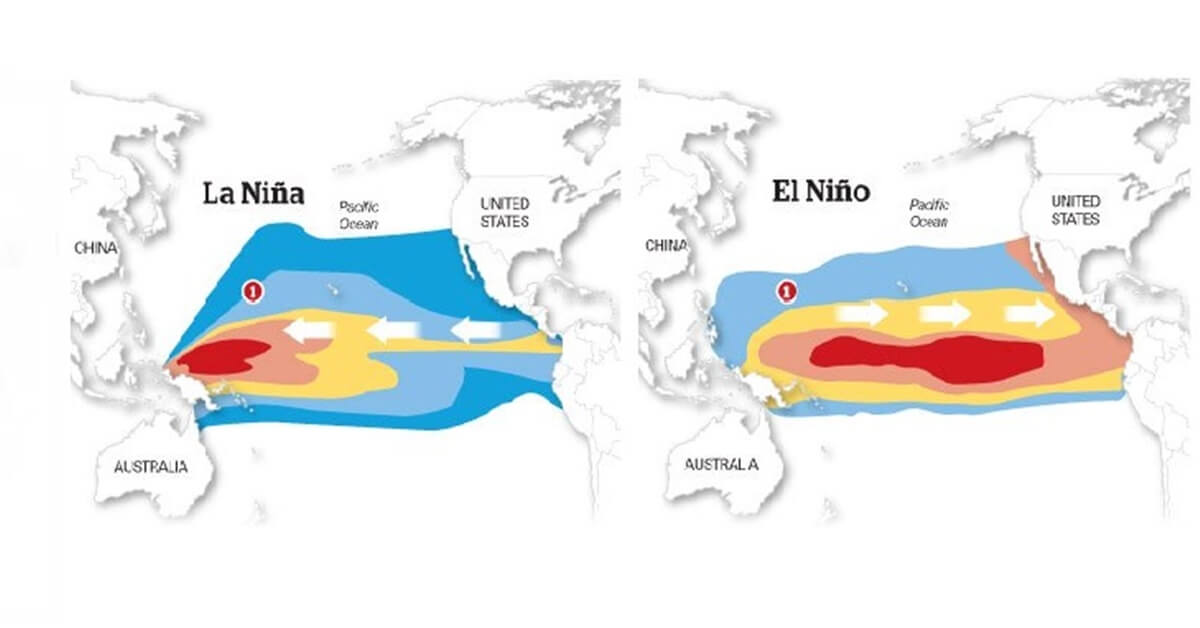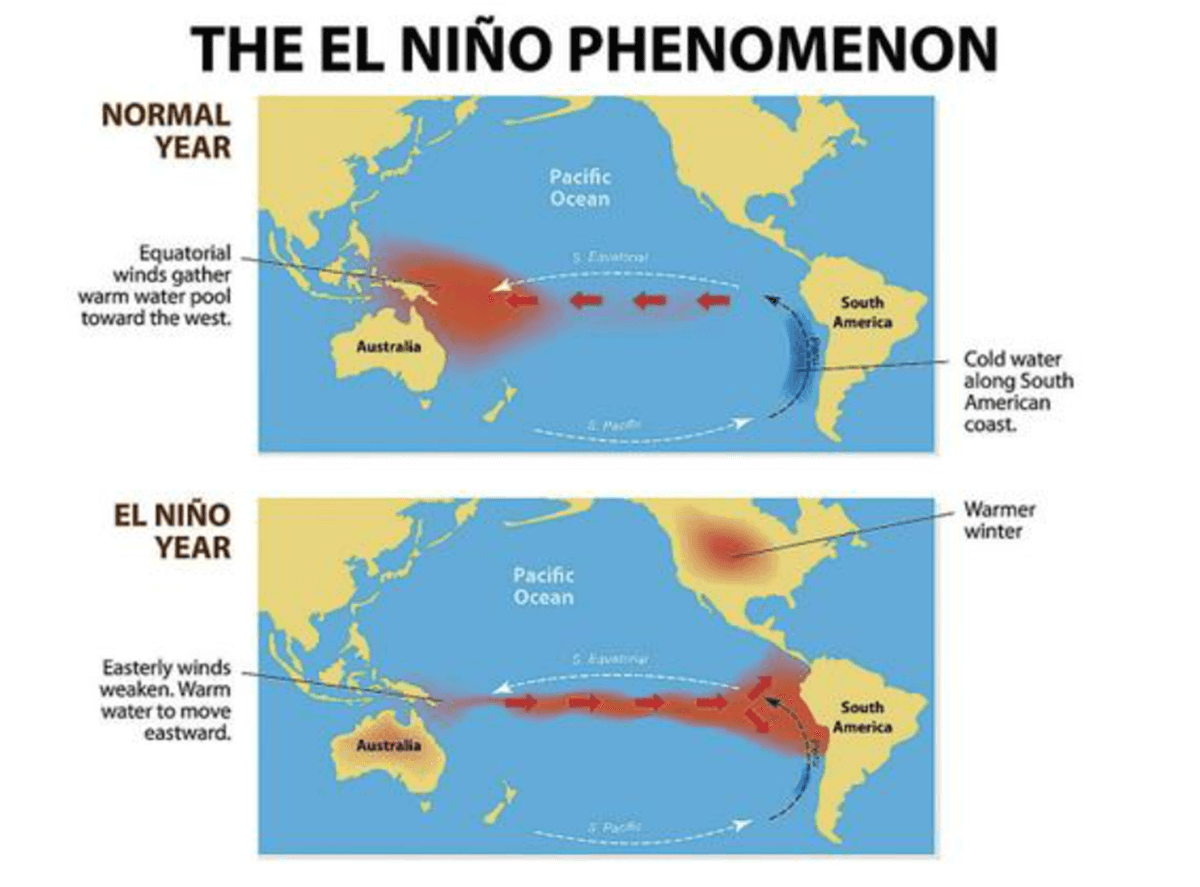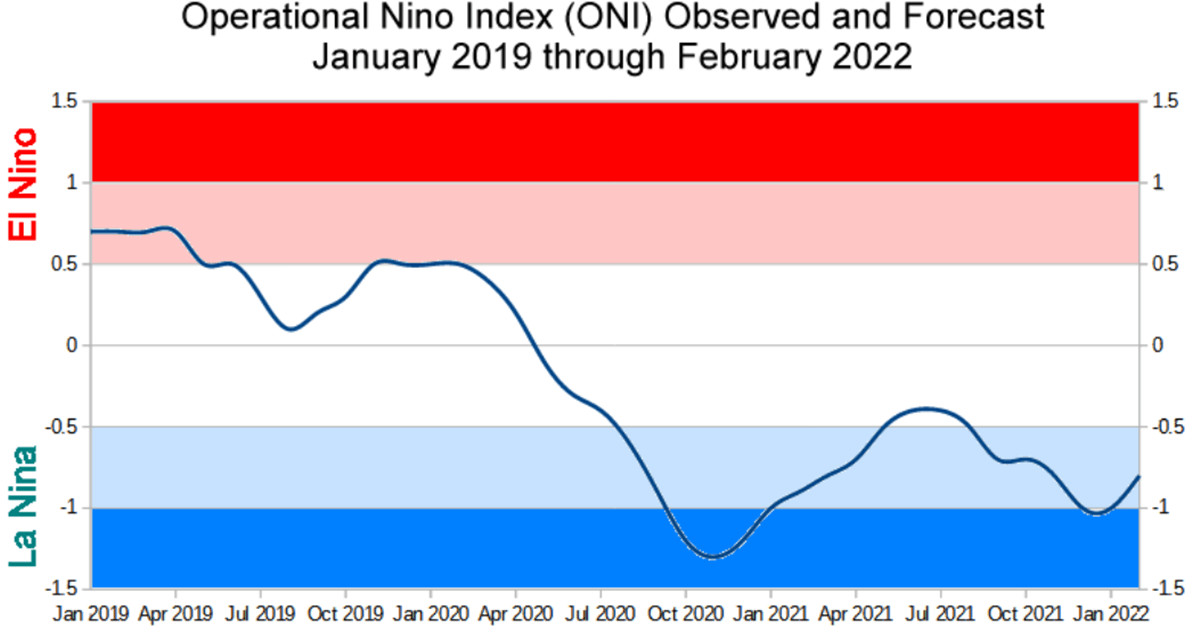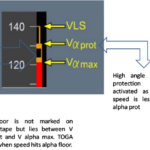El Nino and the Southern Oscillation (ENSO) is a climate phenomenon that occurs every two to seven years. Sir Gilbert Walker discovered “the Southern Oscillation” or large-scale changes in sea level pressure from Indonesia and the tropical Pacific Ocean. He didn’t realize that it was related to changes in the Pacific Ocean or El Niño. It wasn’t until 1960 when Jacob Bjerknes and other scientists realized that changes in the oceans and atmosphere were connected and they coined the term ENSO.
An El Niño event is caused by a strong Walker circulation, while a La Niña event is caused by a weak Walker circulation. “El Niño” refers to the warm phase of ENSO, while “La Niña” refers to the cold phase. Both these events along with Southern Oscillation trigger predictable disruptions of temperature, precipitation, and large-scale air movements in the tropics, triggering a cascade of global side effects. ENSO is also studied to predict the arrival of seasons in advance. This pattern shifts back and forth irregularly. This cycle is not fully understood but both cycles typically peak in December. We can say the Pacific Ocean is moody and mechanisms causing climate change are still being studied. There is no well-defined territory to the studies of ENSO. All reasons for ENSO are still unknown.

El Nino
It is associated with an increase in ocean surface temperature in the central and eastern tropical Pacific Ocean above-average sea surface temperature(SST). Rainfall in Indonesia tends to decrease while rainfall increases over the tropical Pacific Ocean. The low-level wind currents, which normally blow from the east to the west along the equator, instead of weakening or start blowing the other way (from west to east).
La Nina
It is associated decrease in ocean surface temperature in the central and eastern tropical Pacific Ocean below-average sea surface temperature(SST). During La Nina, rainfall in Indonesia tends to increase while rainfall decreases over the central tropical Pacific Ocean. Normal easterly winds along the equator become even stronger.

March 2022 – Current state of ENSO
The La Niña event that developed in the second quarter of 2021 remains active in tropical Pacific Ocean waters, but there are signs of its weakening, in both oceanic and atmospheric terms. According to the latest forecasts from the World Meteorological Organization (WMO), there is a moderate chance (about 60%) of the current La Nina conditions continuing into March-May 2022, followed by a 35% chance of its further weakening to ENSO-neutral conditions. The La Niña conditions are expected to dissipate by mid-April, with ENSO neutral conditions becoming the most likely category for the remainder of the season. NMHSs will closely monitor changes in El Niño/Southern Oscillation (ENSO) conditions over the coming months and issue updated outlooks. Please refer to their webpage for updated information. Information on current ENSO condition.
Impact of El Nino and La Nina
El Nino and la Nina events can last for several years each and their intensity varies from year to year. El Niño is known to strongly influence rainfall in many countries in South American and East Asian regions. Depending on where you live, some of the conditions that are associated with El Nino are hot weather and droughts, forest and bush fires, heavy rain and subsequent floods, tropical cyclones, typhoons, and landslides.
Developing countries dependent on agriculture and fishing, particularly ones bordering the Pacific Ocean, tend to be the most affected by El Niño/La Niña events. This will be discussed again in the “Upwelling Section” of this article.
El Niño events are thought to have occurred for thousands of years. An example of this would be the ancient Moche civilization sacrificing human beings in order to try to stop the rain. It is thought that there have been at least 25 El Nino events since 1900, with the strongest recorded in 1982 – 83, 1997 – 98, and 2015 – 16.
India is also significantly affected by ENSO. There is scientific evidence showing that ENSO modulates the Indian monsoon, with less than normal rainfall during El Nino phases, and more than normal rainfall during La Nina phases.
The monsoon has a major influence on environmental conditions in much of South Asia, hence affecting most of the densely populated part of our planet. Differential heating of the north Indian Ocean, the northwest Pacific Ocean, and of the Indian landmasses, causes the seasonal reversal of monsoon wind. During summer, this wind blows from the ocean to India, bringing lots of moisture to the neighboring land. This following heavy rain can have devastating effects on human lives and living things. Agriculture in India and Asia depends upon the monsoon rains, and the amount of nutrition in ocean surface waters is affected by the monsoon and is essential to the success of the fishery. And El Niño has a wide impact on the monsoon system. The variable nature of the Indian summer monsoon rainfall affects India’s socioeconomic growth. The Indian summer monsoons prevail over the Indian region from June to September, varying both temporally and spatially throughout the year. Extremely low levels of rainfall during the monsoon season seriously affect the agricultural output and thus impact the economy of the country, which is largely dependent on agriculture. It has been established by scientists that Indian summer monsoons are a fully coupled land-ocean-atmosphere system and that they are linked to ocean temperature variability. Previous studies have shown that the interannual variation of the Indian summer monsoons is linked to the ENSO phenomenon directly.
Upwelling
Normally, strong trade wind blows westward across the tropical Pacific, the region of the ocean located between the tropic of cancer and the tropic of Capricorn. These winds push warm water towards the western Pacific Ocean, where it meets Asia and Australia. Due to warm trade wind currents, the sea surface is usually about 1.5 feet (0.5 meters) higher and 45 degrees (45°C) warmer in Indonesia than in Ecuador. As the warm water moves westwards, it causes the cool water to rise up towards the ocean’s surface. This process is called Upwelling.
Upwelling brings nutrients up from the deep sea to the surface where they can be used by phytoplankton. Nitrates and phosphates are nutrients found in cold water. Phytoplankton uses them for photosynthesis, which is the process by which plants create chemical energy from sunlight. Other organisms, such as clams, eat plankton, while predators, such as fish or marine mammals, prey on clams. Upwelling helps provide food for a wide variety of marine life, including the most important fisheries.
Conclusion and future impact of El Niño/Southern Oscillation (ENSO) on global climate
A 400-year-old seasonal record of El NINO created by Australian scientists has shown that a new type of ENSO (El Nino Southern Oscillation) has become more frequent in the last 30 years than at any time in history in the central Pacific and that traditional El Nino events have intensified and become more severe. The trend of El Niño in the last four centuries has shown variations in El Niño type. There has been an increase in Central Pacific events and a decrease in Eastern Pacific ones. Since the late 20s, the most recent 30 years include fewer but more intense Eastern pacific El Nino events. The trend shows they have been growing in intensity. The detailed properties of an oscillation depend on long-term average background conditions that change slowly with time.


